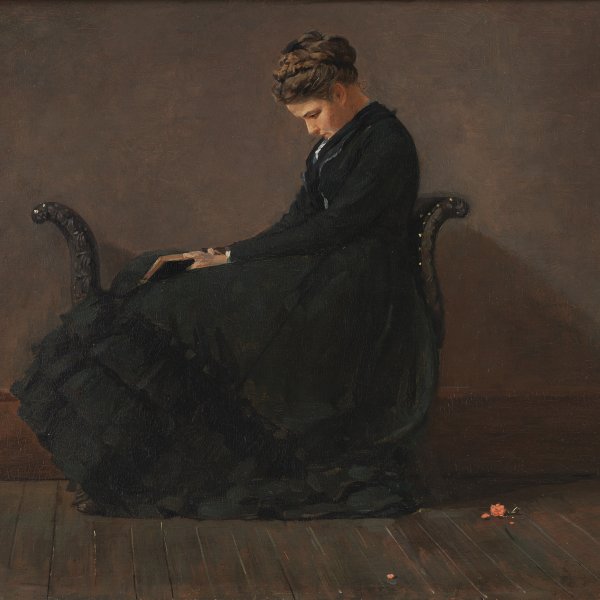Winslow Homer
Boston, 1836-Proust Neck, 1910
Winslow Homer was the most important American artist of the second half of the nineteenth century, who excelled in both oil painting and the watercolour technique.
Homer studied at Cambridge, Massachusetts, and started out working as an illustrator in Boston and later in New York, where he went to live in 1859. His artistic training was limited to a few classes in painting from life at the National Academy of Design. In 1859 he began to work for the magazine Harper’s Weekly as a correspondent during the civil war. He travelled to Paris for the Exposition Universelle in 1866 and was fascinated by the French painting of the time.
During the 1860s Homer painted a series of works on themes inspired by American popular culture. He subsequently developed a more transcendental type of painting that reflected on nature and its relationship with man. In 1870 he made his first trip to the Adirondacks in New York State, to which he would return on many occasions to paint.
Homer travelled to England in 1881 and settled in Cullercoats, a village on the North Sea coast, where he remained until November 1882. He began to depict scenes of local fishermen with an almost heroic monumentality. In the summer 1883 Homer moved to Prouts Neck, Maine, a peninsula on the Atlantic coast where he lived until his death. During these years his contact with the sea, such an important feature in his oeuvre, was translated into masterful coastal scenes. During the winter months Homer made many trips to the tropics, the Bahamas, Florida and Bermuda, places where he painted delicate watercolours conveying their warm and calm atmosphere.
Homer studied at Cambridge, Massachusetts, and started out working as an illustrator in Boston and later in New York, where he went to live in 1859. His artistic training was limited to a few classes in painting from life at the National Academy of Design. In 1859 he began to work for the magazine Harper’s Weekly as a correspondent during the civil war. He travelled to Paris for the Exposition Universelle in 1866 and was fascinated by the French painting of the time.
During the 1860s Homer painted a series of works on themes inspired by American popular culture. He subsequently developed a more transcendental type of painting that reflected on nature and its relationship with man. In 1870 he made his first trip to the Adirondacks in New York State, to which he would return on many occasions to paint.
Homer travelled to England in 1881 and settled in Cullercoats, a village on the North Sea coast, where he remained until November 1882. He began to depict scenes of local fishermen with an almost heroic monumentality. In the summer 1883 Homer moved to Prouts Neck, Maine, a peninsula on the Atlantic coast where he lived until his death. During these years his contact with the sea, such an important feature in his oeuvre, was translated into masterful coastal scenes. During the winter months Homer made many trips to the tropics, the Bahamas, Florida and Bermuda, places where he painted delicate watercolours conveying their warm and calm atmosphere.









